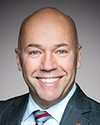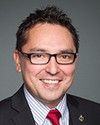Thank you, Mr. Chair.
Thank you so much for this and your presence.
I want to say that every time I see on Facebook one of the students from Treaty No. 9 announcing they're going to university, that's a huge victory. That's the future. Certainly many are going to Nipissing. I want to thank you for that work.
Mr. McCormick, I'm sure it's the same in your area.
I'm interested in the issues of sustained funding. We had an example in the Attawapiskat housing crisis when the media came up for the first time to see the situation. They were shocked and outraged to find there was this beautiful healing centre. What were those people in Attawapiskat doing with that beautiful healing centre? There was lots of money to build a healing centre, and there was no money to run it, no money to staff it, no money to heat it. Both the feds and the province came, cut the ribbon, then left town, and we had a beautiful healing centre that sat there empty.
It's the March madness, where we go into schools that don't have math books and they'll suddenly have state-of-the-art gear and it's like, “How did you get that?” Indian Affairs called and said, “We have to spend the money within three weeks, buy something”.
My real deep concern out of this study is that Health Canada will announce, in response, that they're going to start a new program, and it'll be a carry on of this hamster wheel of programs.
How do we get to taking this money out of INAC and out of Health Canada and say, “ITK has a plan for suicide prevention, let ITK run it”, or “NAN territory has done the work, let them do it”, so we can start to do modelling that actually responds to the needs of communities as opposed to ticking the boxes for the bureaucracies here?




